We got an inquiry from a fellow pewterer about how the stones are held into the comets, and how we recognized that the casting includes clips that are pressed back to hold them in place. Here are some shots of the comet brooch mold, the castings, and the photos we worked from of the medieval originals that helps answer those questions. We didn’t have a casting that had not been clipped and cleaned to hand when we got this inquiry, so you must imagine the sprue and gates are still present. The mold is made in three parts: one for the front and two back pieces that contain the sprue (casting gate) and also create the pin.
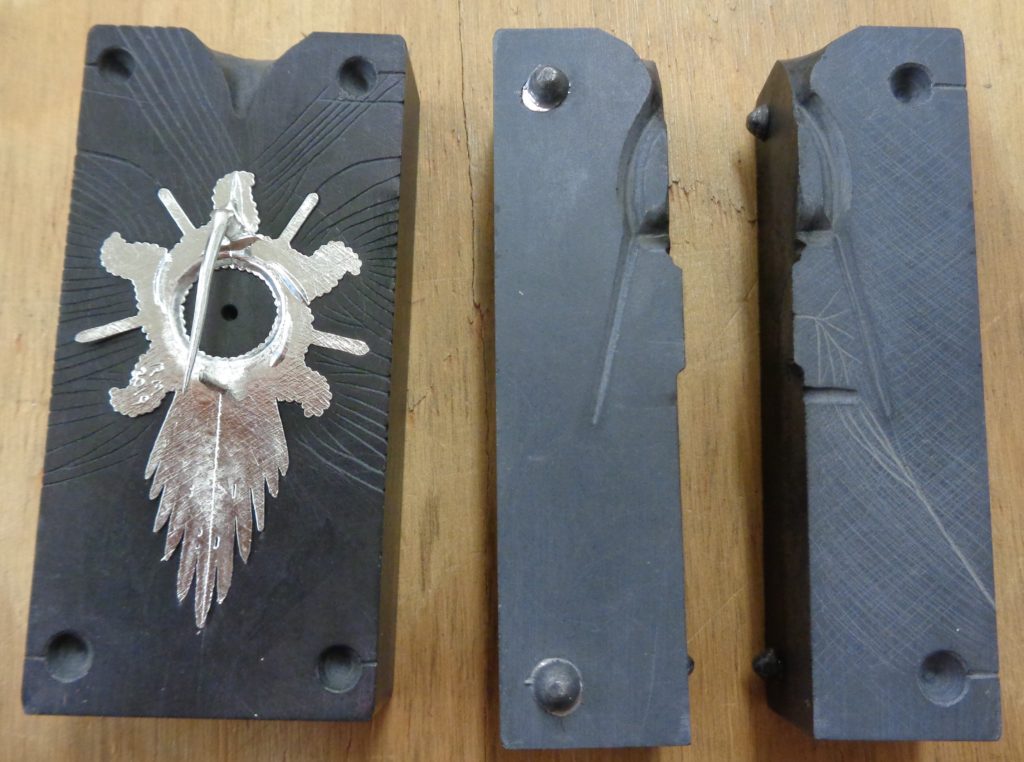
The raised area in the back pieces.
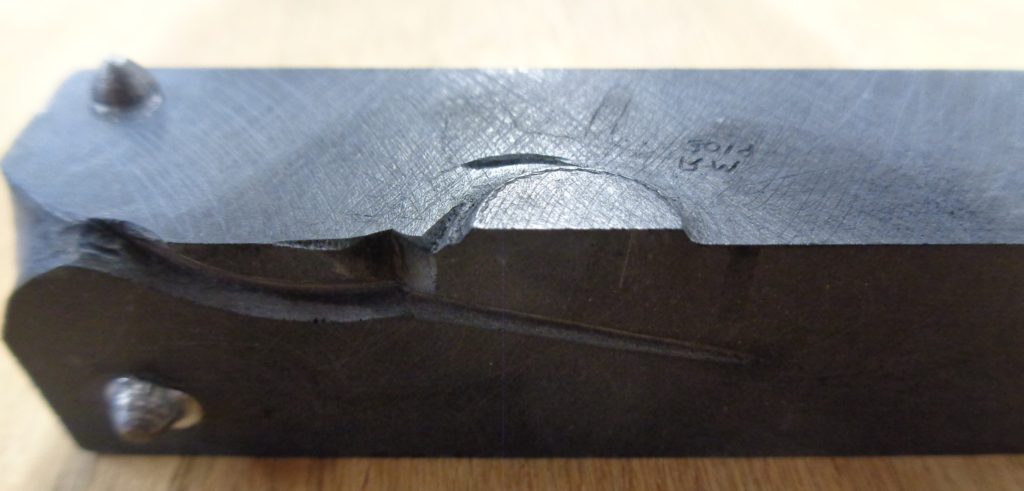
The front piece of the mold casts the round setting for the stone and the high part of the back pieces makes the opening in the setting where ti rises to touch the front.
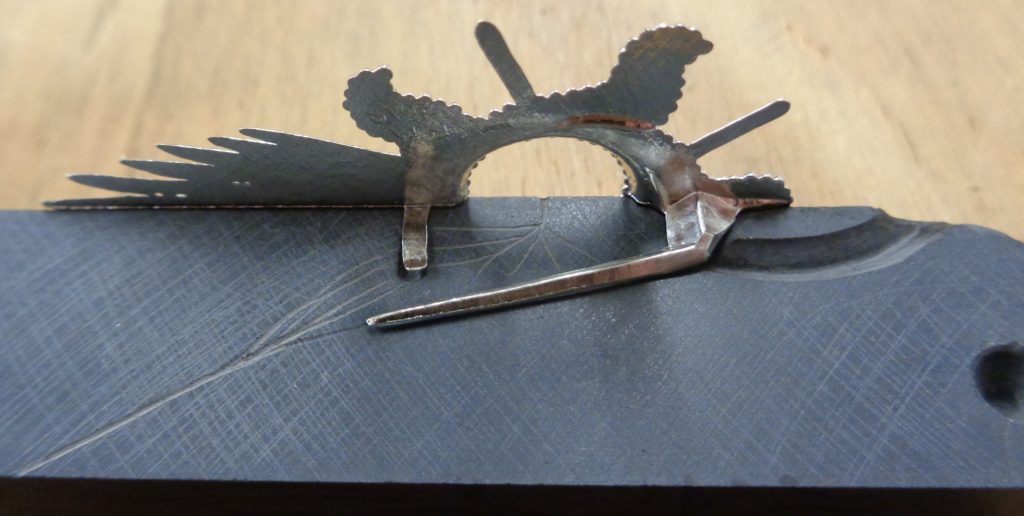
A casting with the clips folded back to retain the stone.

Images of originals – the green arrows point to the places where the clips emerge and are folded back.
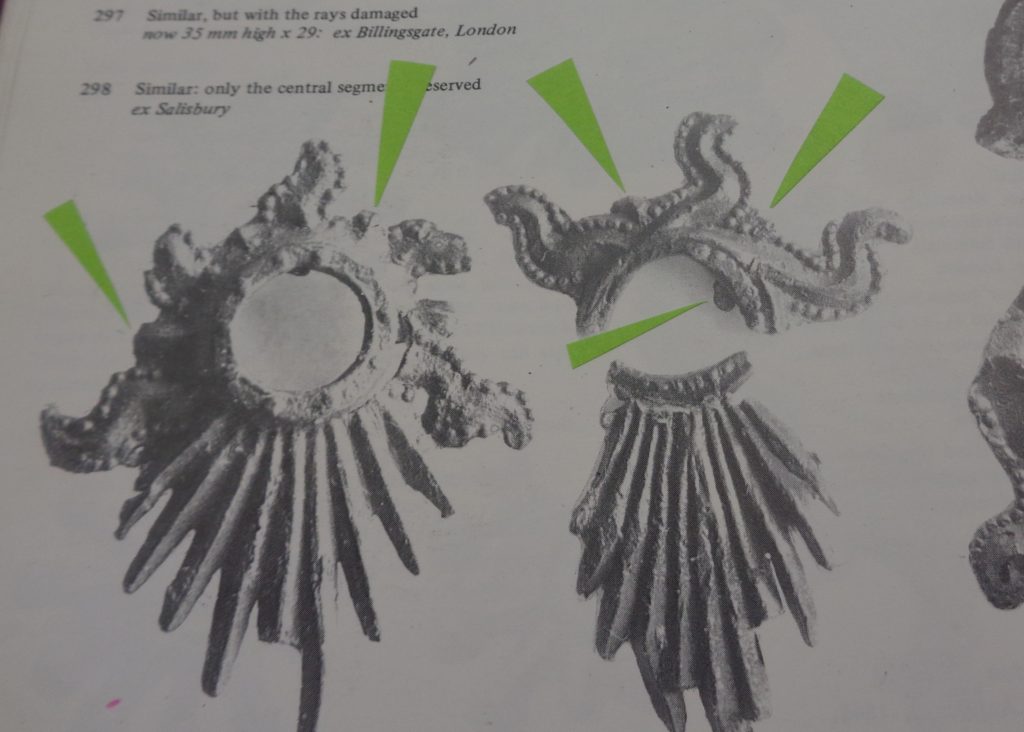
Drawings of original brooches that cast incompletely, and were never pressed into service. The green arrows point to unfolded clips.
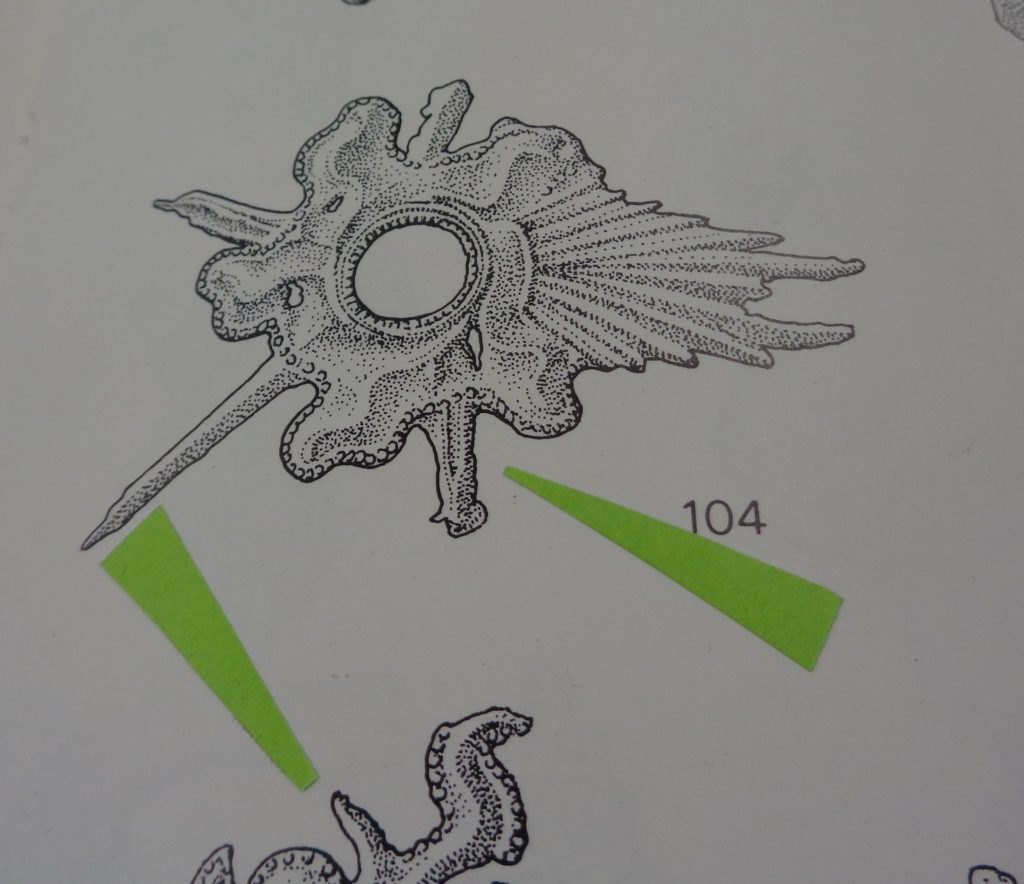
Although it has only three pieces, the comet brooch mold casts a pretty complex piece.
